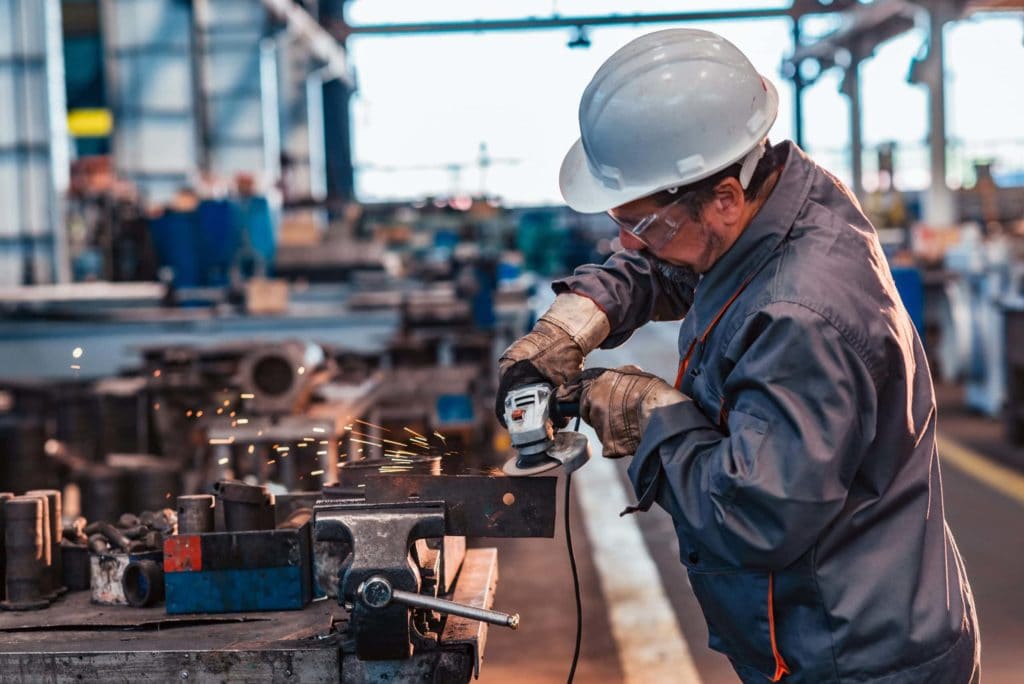At KDML Precision Machine, we offer prototyping as well as low- and high-volume production of components for a variety of industries, including automotive, aerospace, laboratory, marine, food and beverage, medical, military, and textile, among others. With three-, four-, and five-axis CNC machines, we can fabricate parts up to 60” long, 30” wide, 12” high, and 30” in diameter. Our capabilities include CAD and CAM services, reverse engineering, bar feed, large swing lathe, four- and five-spindle machines, and more.
We offer a wide range of machining processes, including precision turning and milling. It’s important to understand the advantages and disadvantages of milling vs. turning when determining how to manufacture your components, and our team will help you weigh the pros and cons against your specifications to ensure we produce parts that meet your needs.
What Is CNC Milling?
In the CNC milling process, the workpiece is held in a stationary position while the multi-point cutting tools work around it to remove material and achieve the desired shape with intermittent cutting. Because it takes a bit longer than CNC turning, milling is more commonly used for prototyping and low-volume production runs.
One of the major benefits of CNC milling is reduced material waste and cost. It’s ideal for creating complex geometries and features.
What Is CNC Turning?
Unlike milling, the CNC turning process features a stationary, single-point cutting tool, which stays in contact with the workpiece as the workpiece moves. Turning produces fragmented, discontinuous, or continuous chips, while milling, in contrast, produces only discontinuous chips.
Because the cutting process is smoother, it allows for work at a higher speed, resulting in greater productivity. Therefore, turning is suitable for high-volume production runs, and it reduces the need for manual intervention. It’s ideal for cylindrical and conical surfaces and is used to manufacture shafts, bushes, sleeves, tubes, and more. Turning machines can also be used for other processes, including drilling, tapping, and more.
Applications: CNC Milling vs. CNC Turning
Both processes use advanced CNC technology and CAD software to reduce the risk of human error and produce consistently precise components. They’re both essential in creating functional and decorative components in a variety of industries, including electrical, woodworking, automotive, and more. Milling is used for flat or square parts while turning is common for producing cylindrical components and non-ferrous metal finishing.
The process you need will depend upon the production volume and the desired finished shape of the component, along with any additional required operations to achieve that shape. Some custom parts require both milling and turning processes.
Milling processes include:
- Chemical
- Mechanical
- Electrical
- Thermal
Precision turning operations include:
- Boring
- Facing
- Knurling
- Grooving
- Parting
- Drilling
CNC Milling & CNC Turning Services at KDML
At KDML, we have years of experience and extensive capabilities to meet all your CNC milling and turning needs. We’ve worked with a wide range of materials, including:
- Brass
- Carbon steel
- Stainless steel
- Bronze
- Iron
- Magnesium
- Titanium
- Silver
- Aluminum
- Cobalt
- Inconel®
- Platinum
- Kovars®
- Acetal
- Acrylic
- Polypropylene
- Acrylonitrile butadiene styrene (ABS)
- Nylon
- Ceramic
- Fiberglass and fiberglass reinforced plastics
- And many other metals, exotic metals, plastics, and more
In our ISO-certified facility, we are equipped to meet the stringent standards that govern many industries, including ANSI, ASME, FDA, RoHS, and Mil-Spec. In addition to CNC machining, we offer secondary services, including heat treating, assembly, welding, and more, so you can complete your custom solutions with one skilled team. Contact us to learn more about our capabilities and experience or request a quote for your project today.

